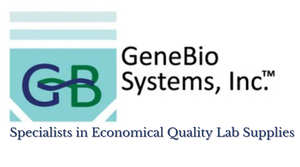Collection: Pipette Tips
Pipette tips are crucial accessories in laboratory settings, used with pipettes for accurate and precise liquid handling. They come in various formats to suit different applications and preferences. Here's an overview of some key aspects:
Formats:
Bulk Tips: These are loose tips usually supplied in bags or boxes. They are convenient for high-throughput labs where large quantities of tips are used regularly.
Racked Tips: Racked tips come preloaded in racks, providing a more organized and convenient way to access tips. Racks may be made of plastic or other materials.
Reload Systems:
Reload Tips: Some tips are designed to be used with a reload system where a portion of tips can be replenished without changing the entire rack. This can reduce waste and cost.
Filter vs. Non-Filtered:
Filter Tips: These tips have a barrier (usually a hydrophobic filter) to prevent the pipette from becoming contaminated by aerosols or liquid. They are commonly used when working with PCR or other sensitive applications to avoid cross-contamination.
Non-Filtered Tips: These tips lack the additional filter and are suitable for general use where the risk of contamination is low.
Low Retention Tips:
Low Retention Tips: These tips are designed to minimize sample retention on the inner surface of the tip, ensuring that the full volume is dispensed and improving the accuracy of pipetting, especially with viscous or low-surface-tension liquids.
Rainin vs. Universal Tips:
Rainin Tips: These tips are specifically designed for use with Rainin pipettes. They ensure a proper fit and seal, optimizing performance.
Universal Tips: These tips are designed to fit a variety of pipette brands. They are more versatile and can be used with different pipettes, offering flexibility in the lab.
Color-Coding:
When selecting pipette tips, it's essential to consider the specific requirements of your experiment or application. Factors such as sample type, volume range (such as 10, 20, 100, 200, 300, 1000, 1250, 5000uL or 10 mL), and potential for contamination should guide your choice of tip type and format. Additionally, it's important to ensure compatibility with the pipette being used, whether it's a Rainin pipette or a more universal model.





















